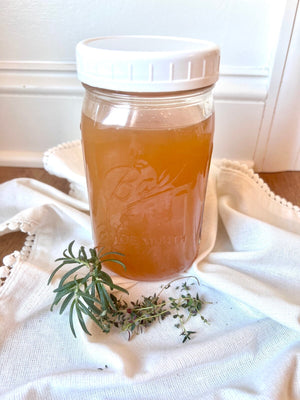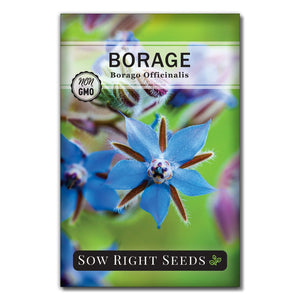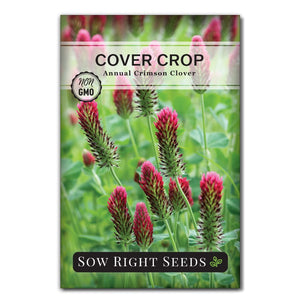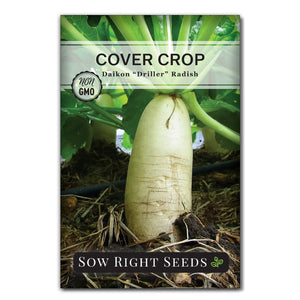How to Amend Sandy Soil and Start Growing!
Improving soilSoil is the foundation for every successful garden. And creating the perfect garden soil is the goal of every gardener. So, how do you start growing with sandy soil, and what do you need to do to improve it? We’ll cover the basics, from testing your soil to adding amendments and choosing the best plants. Get ready to enjoy your sandy soil for growing and not just building sandcastles.

Gardening In Sandy Soil
Sandy soil has its advantages and disadvantages. It is excellent for draining, which will prevent root rot and other diseases caused by dirt that stays too wet. But sandy soil doesn’t hold on to nutrients that plants need for healthy growth.
What is sandy soil?
Soil is composed of three particle sizes: clay, silt, and sand. Sand is the largest particle size of the three. Good garden loam has a mixture of all three components. Sandy soil will be composed of more sand than the other particles.

How can you tell if you have sandy soil?
You can have your soil tested through your local county extension office or a professional soil testing company. Or you can do some simple home soil tests.
First, take a handful of soil and wet it down. Then squeeze it and let go. Does it stick together easily and stay in a clump? Does it squeeze together but then easily fall apart? What does it feel like? Is it slippery and smooth? Is it gritty and coarse? If your soil falls apart easily and is gritty, you most likely have sandy soil.
Another home test you can do is the jar test. This will give you a better idea of your sand ratio. If you have 70% and above, you have sandy soil.
Benefits of sandy soil
Good drainage. Soil that drains well will prevent problems such as root rot. Most plants like moist soil that doesn’t stay water-logged.
Root vegetables can easily grow. Sandy soil is a great option for growing root vegetables. They can push easily through the light soil and don’t become misshapen.
Preferred by Herbs. Mediterranean herbs love growing in sandy soil. Herbs such as thyme and rosemary thrive in drier soil that doesn’t have a lot of nutrients.
Warms up faster in the spring. You can start planting earlier in the spring with sandy garden soil. Sandy soil holds heat and can also stay warm for fall crops too.
Doesn’t become compacted. Unless it’s 100% sand, sandy soil doesn’t stay compacted. You can walk on it and drive your lawnmower, and it will still be easy to dig.
Disadvantages of sandy soil
Low pH. Sandy soil often has a low pH, which means the ground can be too acidic. Plants grow best in soil that has a pH range of 6 to 7.
Dries out too quickly. Sandy soil can dry out too quickly, leaving tender plants to wilt. Plants with shallow roots won’t be able to get enough water.
Doesn’t hold nutrients. Sand doesn’t have any nutrients for plant roots to take advantage of.
Can quickly get too hot. Standing on hot sand will burn your feet. Hot ground can also stress out plant roots.
Lack of microorganisms. You won’t find earthworms or beneficial microorganisms in pure sand.
Easily erodes. Dry sand can easily blow away. Sandy soil will also wash away in rain and snow.

How to Improve and Amend Sandy Soil
After testing to see if you have sandy soil, you can add amendments to improve your garden soil.
So, how do you amend sandy garden soil?
The answer is simple - and our favorite response to most garden soil questions.
Add more organic matter! (That’s why we love home composting.)
Sandy soil lacks organic matter that holds on to water, and provides the optimal pH level, nutrients, and microorganisms. Adding organic matter to sandy soil will fix all of these problems.
Luckily, adding organic matter to sandy soil is simple. Unlike clay soil, which is hard to work with, sandy soil is relatively easy to dig and till. This makes adding amendments less work.
The amendments you can add to your soil are simple, free things you can easily access.
Compost is the #1 ingredient to add to your garden soil.
If you are doing home composting, this will be easy to add. You can often get more compost for free from local sources.
Leaf mold is another excellent amendment to add to your garden. You can also add grass clippings and your fall leaves.
Using mulch and growing cover crops are other easy ways to amend sandy soil and add organic material.
The one thing you don’t want to add is clay. While it may seem like it would balance out your soil texture ratio, you could quickly end up with soil that is more like concrete than garden loam.

Tips For Growing in Sandy Soil
Water slowly. Since sandy soil drains well, you will want to water gradually and less frequently. Allow the water to move deep into the ground. Deep watering less regularly will encourage deeper root growth and help the plants to be more resilient. When using drip irrigation, the position of the drip needs to be in the root zone. Water in sandy soil doesn’t spread out as much and drains down.
Use slow-release fertilizers. Because sand doesn’t hold onto nutrients, slow-release fertilizers will remain in the soil and continue providing nutrients over time. You could fertilize more frequently, but it's a waste of time and money if the fertilizer is just washing away. You’re better off using the right kind of fertilizer for the soil conditions.
Add mulch to conserve moisture. A layer of organic mulch will help cool the ground surface and keep moisture from evaporating too quickly. Over time, an organic mulch will break down and contribute material to the soil.
Use plant supports. Vegetables and flowers that become top-heavy will need extra support so they don’t fall over. Sandy soil doesn’t give them much to hold on to. Strong wind or heavy amounts of produce can easily uproot a plant.
Grow Cover Crops
Cover crops will add nutrients to the soil and prevent erosion. Once they are done growing, they can be tilled into the ground. Hairy Vetch, Crimson Clover, and Winter Rye are great sandy soil options.
Top Plants to Grow in Sandy Soil
Flowers:
There are many flowers that can grow in sandy soil. Look for flower seeds that naturally grow in sandy locations such as wildflowers, Columbine, and Lupine.
Herbs:
Mediterranean herbs thrive in sandy soil. You can successfully grow Lavender, Rosemary, and Thyme.
Vegetables:
Root vegetables can easily push through sandy garden soil. Try growing Carrots, Radishes, and Beets.
While sandy soil has some initial challenges due to its fast-draining and nutrient-poor nature, it has advantages too. Many wildflowers, herbs, and vegetables thrive in this type of soil.
If you find your soil is just too sandy, it’s simple to amend with compost and organic matter. Creating your optimal gardening soil is an ongoing process. Start now with the right seeds and garden know-how, and you’ll love growing.
With these tips on growing in sandy soil, you can enjoy gardening with the soil you have.
Found this information helpful? Share it with your gardening friends!









Leave a comment